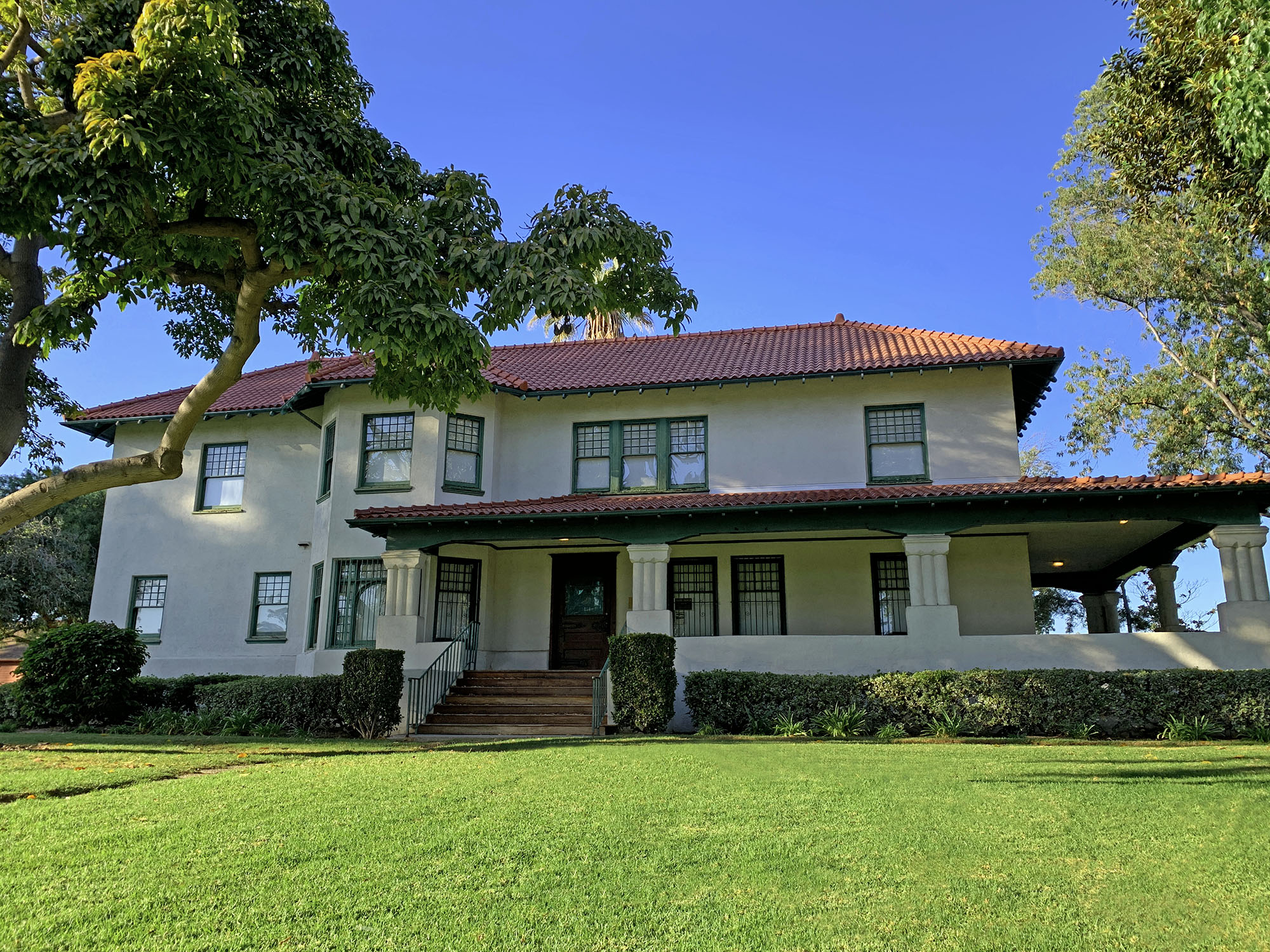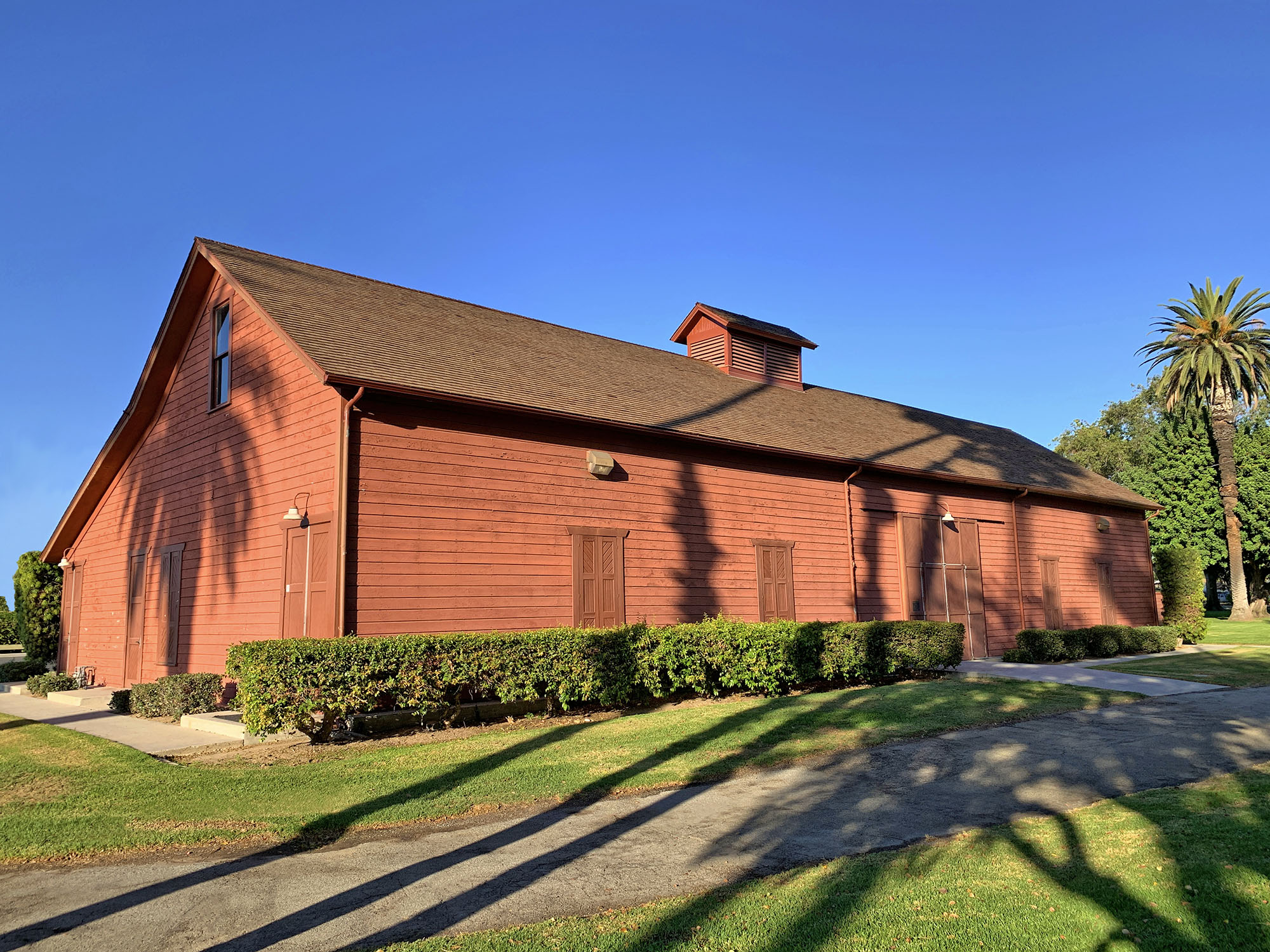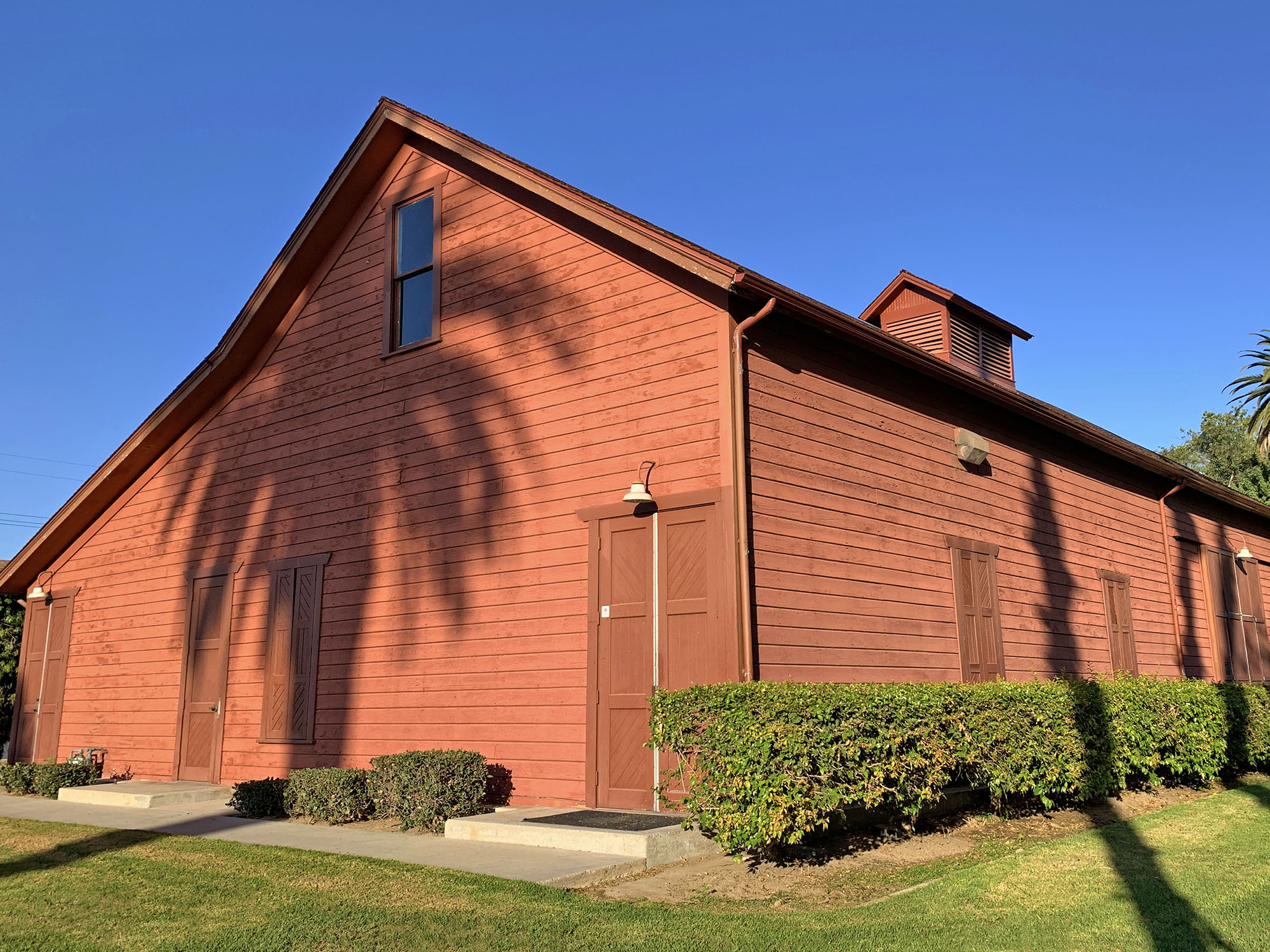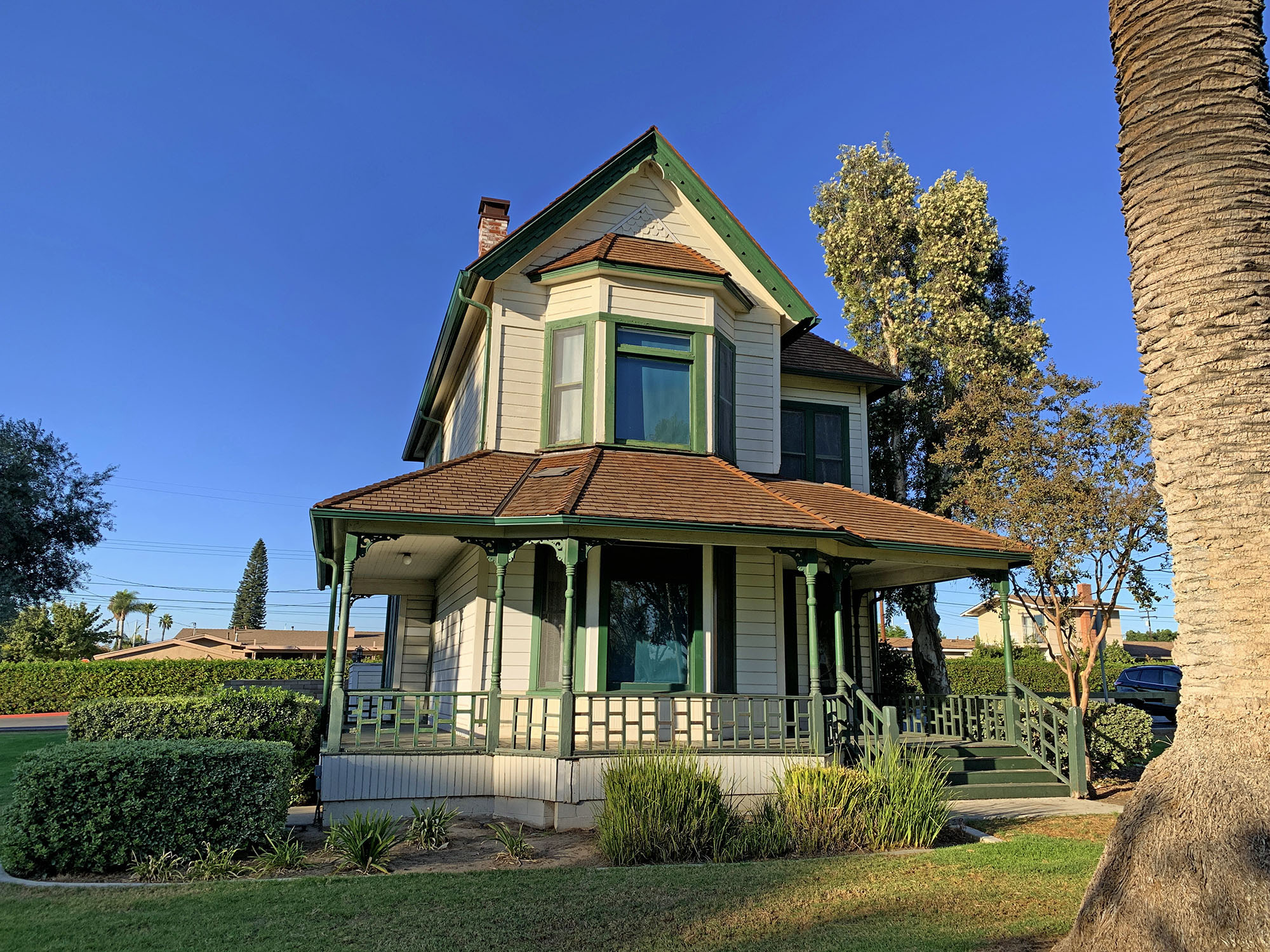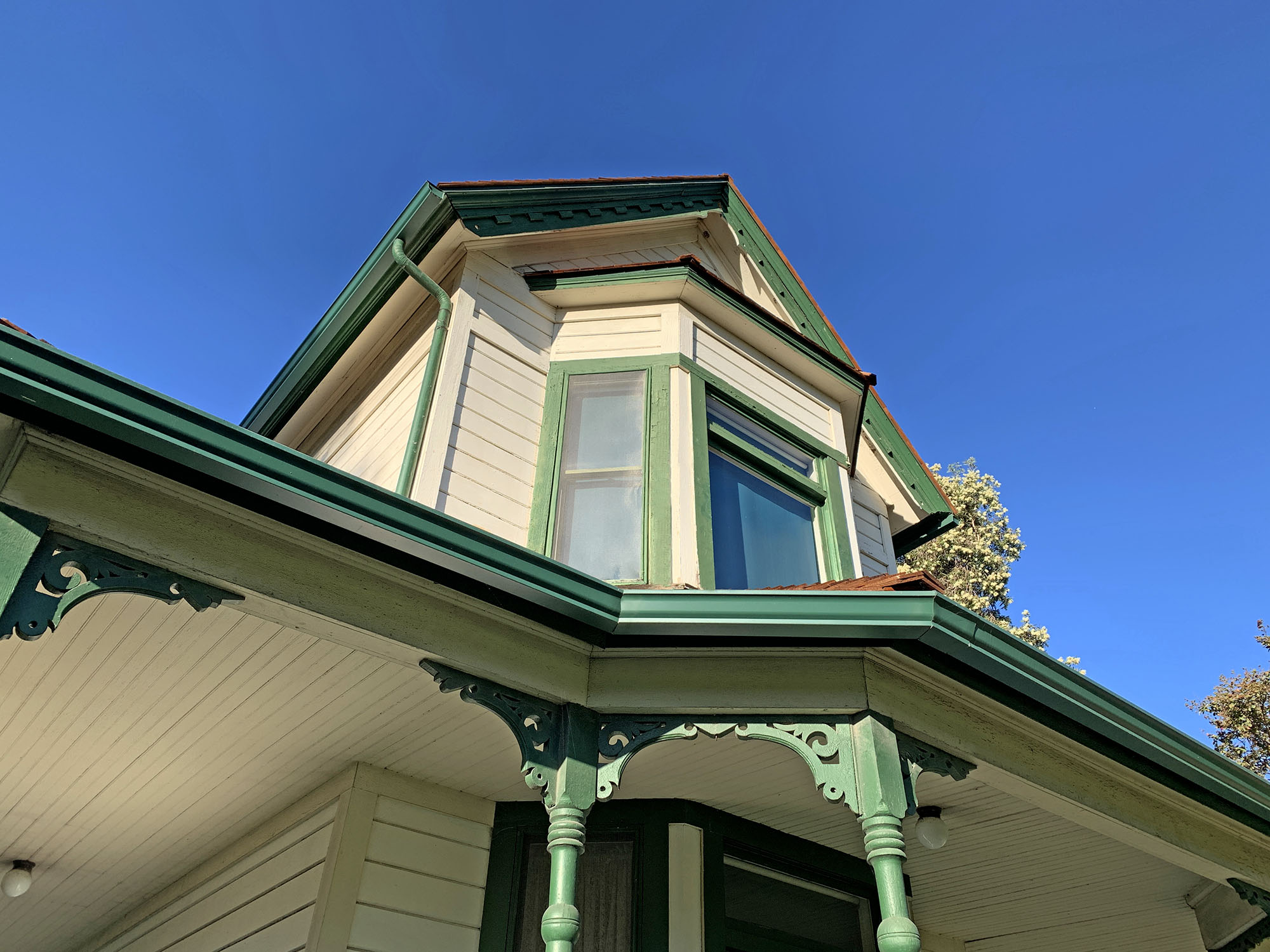La Mirada was created by Andrew McNally, a printer and mapmaker from Chicago, and his son-in-law Edwin Neff. In 1888, McNally purchased over 2,200 acres of Rancho Los Coyotes for $200,000. He developed 700 acres into Windermere Ranch and surrounded it with olive, orange, and lemon groves. At its peak, the ranch became the largest olive orchard in the world.
The Neff Estate includes three historic buildings: Neff Home, George House, and The Neff Barn. The Neff residence was built in 1894 as headquarters for the ranch. All three buildings are listed in the National Register of Historic Places. In 1953 the Neff family sold 2,218 acres of their property to Jack Spears of Pioneer Land and Realty Company of Los Angeles for $4,500,000 and retained 10 acres surrounding the Neff house. These 10 acres became present-day Neff Park.
The Historic Neff Estate is open for free tours on the third Saturday of every month.
14300 San Cristobal Drive
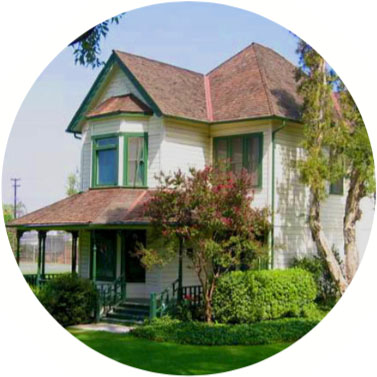
George House
The George House was known as the superintendent’s cottage at the beginning of Windermere Ranch. First employed by the ranch in 1910, Jack George lived here with his family for fifty years.
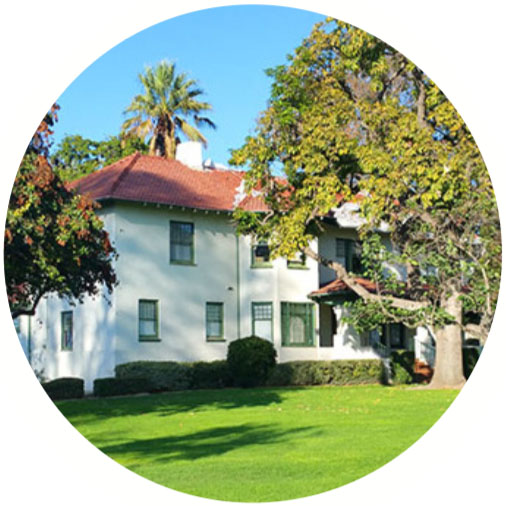
Neff Home
The 11-room Neff Home, with a red-tile, Spanish-style roof and shingle exterior, was built by architect Frederick Roehrig in 1894. The house was named after McNally’s son-in-law, Edwin Neff, the first manager of the ranch.
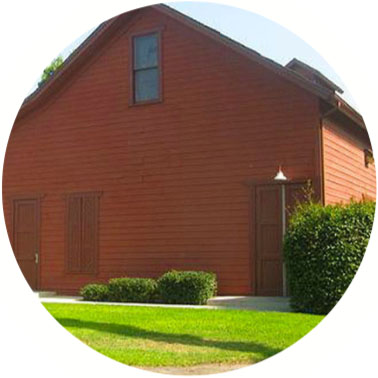
The Neff Barn
The Neff Barn, which displays an extensive collection of historic memorabilia, is used for group reservations, meetings, summer and holiday day camps, and special events.
The Country Gentleman in California
In 1896, McNally and Neff formed the La Mirada Land Company to create a new community of 20-acre gentleman’s ranches. McNally intended to establish a colony totally different than any that had been located in Southern California.
A clubhouse was to be built in keeping with the luxurious tastes of the individuals. The colony was to include wide avenues, parks, an artificial lake, vast swimming pools, and maintenance of all the property held in common.
The Los Angeles Times wrote, “It is expected that the unique surroundings and atmosphere of wealth and luxury will attract a congenial and aristocratic population, where all the vagaries of fashion and the extravagance of wealth can be indulged in without intrusion…”
A few parcels did sell but an economic downturn stopped McNally from realizing his dream so he used the remaining land for agriculture.
Source: Los Angeles Times – April 12, 1896

Click here to learn more about La Mirada’s past and how it formed our beautiful city today. The historical timeline takes you from 1846 to modern-day La Mirada.

